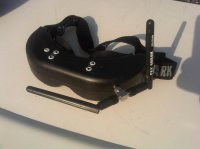I know RF, did it prefessionally for 40 years. You need a power divider. A "T" is not OK, impedance mismatch, as stated. If used in the receive side these devices are sometimes called a "multicoupler". Can be active or passive. If used in the transmit side, called a "power combiner". Mind you you cannot combine two transmitters randomly as they are not cophasic. If the transmitters are on different frequencies, and both frequencies are within the bandwidth of the antenna system, yes again, but not on the same frequency. Basically, one antenna can feed multiple receivers with a divider, transmitters, no. That said, I'm not aware of any inexpensive, lightweight, combiners that would work at microwave frequencies, so the aircraft side is out. Two receive antennas may not yield any results as they are located at different points in space, so they will yield different phases as well. The combined node will exhibit the algebretic sum or difference of the two signals. Might be a plus, might be minus. One recieve antenna feeding multiple radios, heck yes. My base VHF-UHF monitoring station of 9 radios is fed from single antenna.

